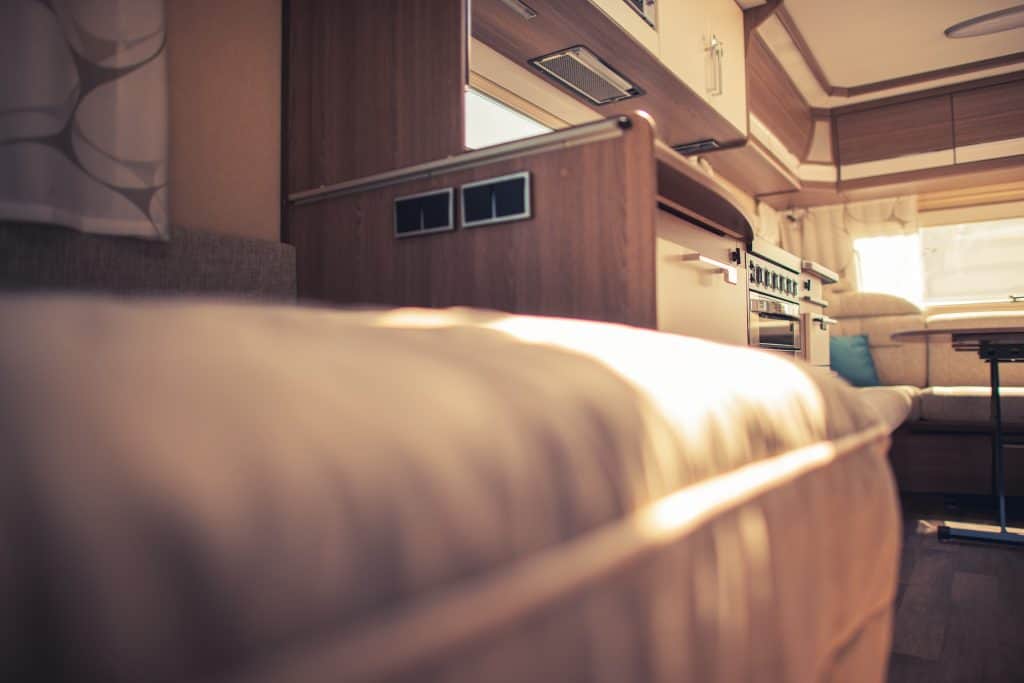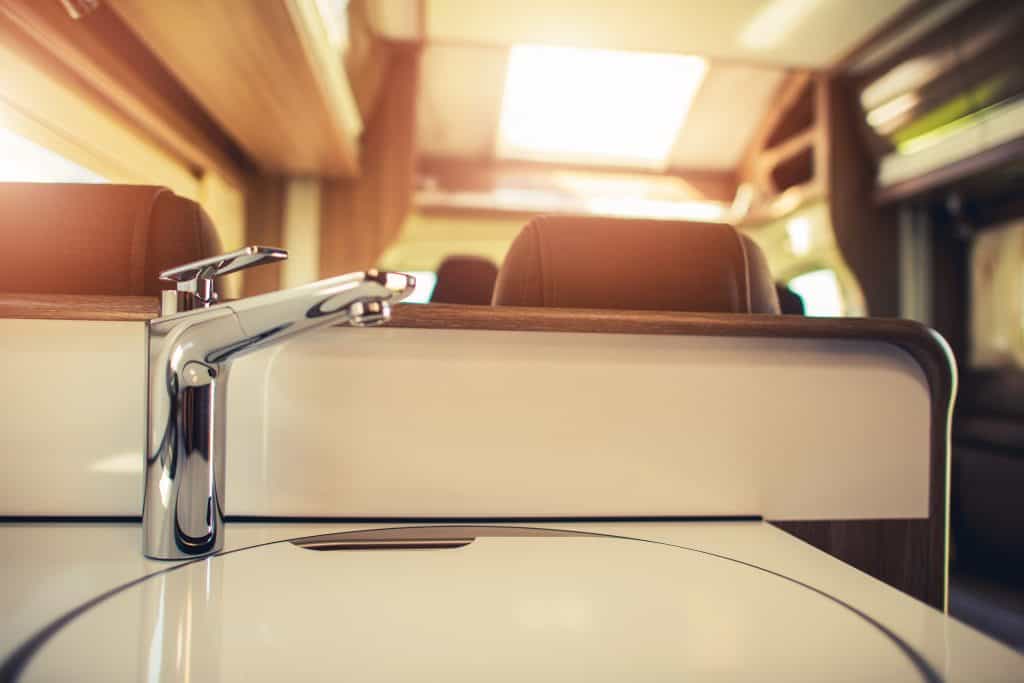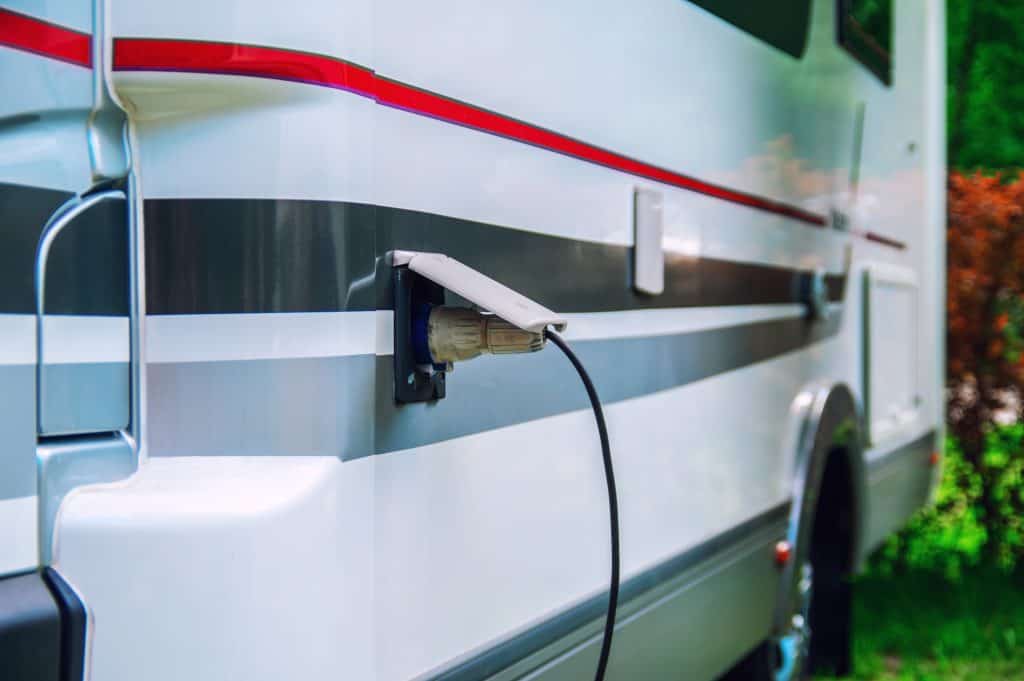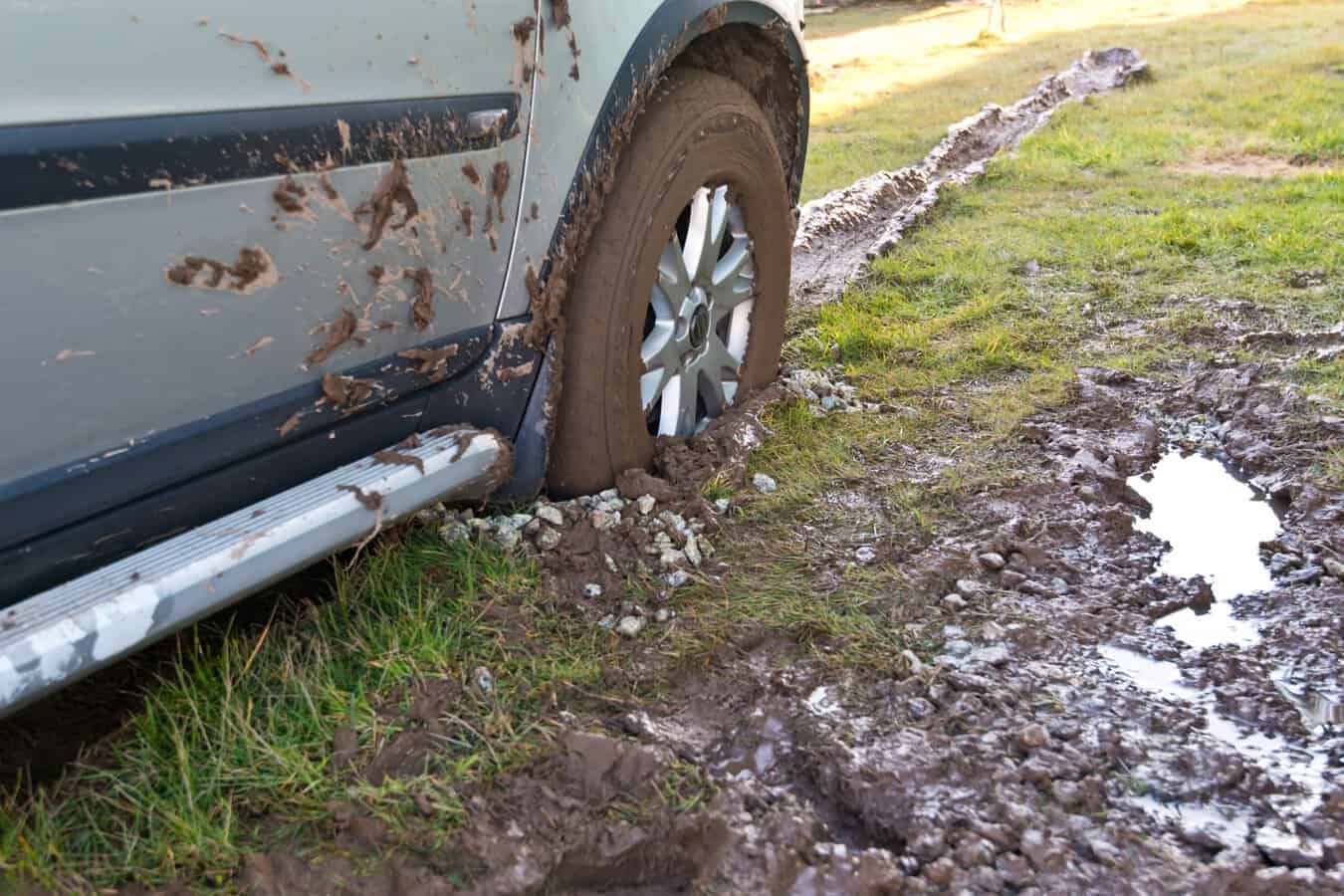
So you just bought a hot new RV and are excited to take it out on the road, but you may not realize that not everything in your RV is what you may have imagined. Just because you buy an RV one way, doesn’t mean it has to have the same old features everyone else has.
This post will go over 11 amazing mods and upgrades that are great for most RVs. Some RVs are great how they are, but if you’re looking for something to make it a little more “you” then you’ve come to the right place.
Here’s just a quick snapshot of what we recommend you do for your RV. Not every RV will need these upgrades depending on your model, so take a look at what you do have and what you may not have. Promise, you’ll have a fun time upgrading your ride with the following suggestions.
- Get a New RV Mattress
- Switch Out Your Inside and Outside Lights
- Change the carpet
- Increase your Battery’s and Generator’s Capacities
- Upgrade to a Digital Thermostat
- WiFi Extender
- Upgrade Your Sewer System
- Hot Water Heater Capacity
- Faucets and Shower Head
- AC Fan upgrade
- Modifying Your Power Outlets
Now there are a lot of upgrades you can do besides these 11, however, for my camping needs, these were essential that I needed to have a more comfortable and enjoyable vacation.
1. Get a New RV Mattress

The nice part about using an RV is that you don’t have to sleep in a bag on the dirt outside, however, that doesn’t always constitute you having comfortable sleep in your RV now.
The mattresses in some RVs are just cheap versions that aren’t very comfortable for some. If you get a mattress that has memory foam or is something you are familiar with you are more likely to have a better night away from home.
Mattresses can get expensive but considering you will use this mattress a lot less then your one at home if you use your RV for just camping, an RV mattress will last you much longer with proper care. What’s the point of going on vacation if you don’t get to relax in the evening?
A great place to look for a different mattress would be Tochta. They can even make you a customizable mattress to fit your RV’s dimensions and your comfort preferences so you can have exactly what you want. This is also not a bad option for your wallet either.
This is just one of several different companies that are out there, but you can’t beat the reviews and customer satisfaction.
When manufacturers make RVs, they do it furnished, however like some of the drawbacks of getting an apartment that is already furnished, the furniture in the place may not be what you wanted– just a “make it work” type of situation. But you shouldn’t have to compromise.
Unlike a warranty with your entire RV where they may not replace the mattress after a while, mattress companies that you choose to upgrade with usually have their own warranty plan, so you can truly sleep soundly at night knowing you’ll be taken care of.
2. Switch out Your Inside and Outside Lights
This is definitely one of the “musts” that we highly suggest for your RV. When you switch out your light bulbs to what you want you can get more out of the light in your RV. After all, having light helps improve mood!
The trouble with some RV lights is that they are pretty cheap and blow out quickly and have low wattage or aren’t that environmentally friendly. Luckily, just because you bought the RV doesn’t mean you are married to the lights.
We recommend getting LED lights or a higher upgrade of your choice of light bulbs that you rely on and trust already. We also suggest that you not only change the lights on the interior of your camper but also on the outside.
My favorite thing to do when I was younger on camping trips was staying up late since there weren’t such strict bedtimes on vacation. When you upgrade your outside lights, you can create a safe, fun evening environment so you can enjoy the nightlife.
Having better lights on the inside of your RV also helps control temperatures inside. I know! Crazy right? But it’s true, especially if you are going to leave the lights on for a while, it will take energy and add more heat to the room–which isn’t always fun on an already hot day.
One last perk about switching light bulbs is the fact that there are light bulbs that keep bugs away if that isn’t a strong reason to change out your light bulbs, I am not sure what else would change your mind.
3. Change the Carpet

I don’t know about you, but with kids, debris, pets, and other things, the carpet in your RV is going to take a beating often. Because of the “nature” of the outdoors, your coming in and out of your RV a lot dirtier than you usually would when you’re at home.
With lake water, mud and other materials getting into your carpet, your either going to have to clean your carpet a lot, or just have dingy carpet for most of your RV life.
A solution we suggest for this is to just get rid of the carpet entirely and replace it with a material that is compatible with your RV like laminate or tile if you’re feeling extra fancy. It not only looks better but will last longer and is so much easier to clean.
The least exciting thing you can do on vacation is clean, so don’t make it harder on yourself for no reason.
Another thing you could also do, if you enjoy carpet in your RV, is to just strategize where you have it laid out. For example, it’s nice to have something soft under your feet first thing in the morning instead of being met with a cold floor. First world problems, but it’s helpful.
4. Increase your Battery’s and Generator’s Capacities
Battery Capacity
Just as it is important for you to have charged emotional batteries in your life, having enough energy in your RV batteries is a must. Most RVs already have a couple of heavy-duty batteries, however, depending on how long you’re going to be gone and use your batteries, you may want a few spare.
The thing about RVs is that you use a lot more power than you normally would for just taking your car and a tent out for a camping trip. You will be used to using the amenities RVs offer at the same rate as your house, which your RV simply won’t have the same capacity for.
So, by making sure your batteries are charged, we recommend not only having extras but also to bring a handheld jump starter pack. They are pretty nifty and don’t require another car to get you out of a dicey situation.
They don’t replace or sustain a dead battery for a long period of time, but definitely, pack a punch in getting you out of a bind when you are out ruffing it out on your own.
Generator’s Capacities
This section is definitely a two-part thing. Batteries and your generator are two different elements of an RV. Generators are what allow you to use all the “extra stuff” you brought along with you or even just the amenities within your RV.
Some RVs come with a 2,000-watt generator to help take the edge off your battery, however, most don’t and 2,000-watts is not that much. Everything you use in your RV requires energy usually.
The microwave, toaster, phone chargers, showers, etc. You can only use these as energy limits allow or you will end up burning up the energy in your battery.
What we recommend is getting a generator that has at least a 2,000-watt capacity if you don’t have a lot of extra items in your vehicle. If you aren’t sure what you will be using and we recommend getting a 4,000-watt capacity generator. That will cover almost everything.
So you can be making your morning coffee with the drier, microwave, and phone chargers going with peace of mind knowing you’ve got plenty of energy to spare.
5. Upgrade to a Digital Thermostat

Most RVs come with a hard to read thermostat. If you are already fluent in old technology and systems, you might be fond of keeping one of these things. However, most of us enjoy the ease of newer science.
Having a digital thermostat helps you not only understand the system itself (in my opinion) but also it helps give you better control over what is happening inside of your RV. Having this type of thermostat, you will be able to make sure you also know how much energy you are spending.
One of the biggest things I have realized is that sometimes RVs don’t have the best ability to cool down the cabin in relation to what we are used to in our houses or even vehicles. So, this will give you a much better environment to enjoy if you also do step 10.
Doing this also isn’t very expensive. Because of the commonality of digital tech, you should be able to get one of them for about 30 dollars or maybe a little more depending on what brands or kinds that you want. The installation of it may take a little longer but is definitely worth the effort.
One warning if you aren’t careful with your AC unit’s thermostat is that you could actually freeze coils and render your system completely useless. The AC unit in your RV is different than other AC units, so be careful to manage your thermostat.
Here’s a link to another one of my articles if you’re starting to have a few issues with your thermostat or AC.
6. WiFi Extender
Ah, WiFi. One of the best things about the 21st century. If you like to go to RV parks or even just roughing it in the middle of Montana for example, you will want a strong WiFi signal. RV parks offer this service for free.
The trouble is, especially if a lot of people are using the WiFi at the park or if you’re in a place that is hard to get it, having a WiFi extender is a great resource as it boosts existing connections to make it faster and more reliable.
Being out in the boonies, you have to get clever on how you are going to connect with the world. Having one of these will definitely save you a lot of trouble.
There are a few different types and styles you can get. So, to help you know what will be best for your circumstances check out this article I wrote about how to get better WiFi connections and what system would be best.
If you don’t want a booster you can always get your own reliable WiFi system. Most people find this helpful especially if you like to have the freedom of camping outside of RV parks.
You also have a few more options for your own personal WiFi systems like using your phone as a hotspot or getting a hotspot device. There are quite a lot of different kinds all with different price ranges, so you have flexibility in quality and range besides what the RV park or campground can supply.
Without some sort of WiFi upgrade, especially if you’re the type that likes to work even on vacation you could get in a tough spot without the proper tools. No matter what option you choose to go with, you’ll want to get something like this.
7. Upgrade Your Sewer System
This system will take a little bit longer to complete than getting a different WiFi system set up, however for most people, this is a must-have. Upgrading this system in your RV is something that you would see on the TV show Dirty Jobs, but it isn’t impossible.
For this reason, we recommend upgrading this system before you start using your new RV. Or if you did the economical thing and bought a cheaper RV, I recommend cleaning out everything before you get started with pulling houses out. That might be a no brainer for some, but it never hurts to be sure.
Down below, there is a youtube video that is pretty helpful in knowing how to upgrade your system to something a little better. It’s worth the watch to help make this process as simple and clean as possible.
When I went on vacation when I was younger in my grandparent’s RV, we all dreaded the end of the trip or whenever it was that it came time to tackle this project. So at your own discretion, you can choose whether or not updating this feature is worth it.
Most of the time you have to hook up and detach the sewer hose every time you go to a campsite, which can be beyond a bad time. With the hose upgrade that we have posted above, you’ll never have to worry about it making it a dirty job and it also makes storage of the hose so much easier.
To be honest, this is a no brainer upgrade for most RVs. And even though the set up may take longer than you may want, it will make your vacations that much better and take one less thing off your plate.
8. Hot Water Heater Capacity
Now, this is something I really come to appreciate whenever I come back from a camping trip–all the hot water. When you take your RV for a trip, you have very limited hot water time. Like maybe 1/3 of the capacity of your home.
For those who like to spend personal time in the shower, you’re going to be in for a cold surprise. In a standard RV, you’d get about 15 or so minutes of hot water, at least that’s how it was for us.
So if we don’t have a little bit of wiggle room with the hot water, it’s not as worth it for us to use our RV shower. It’s pretty easy to actually upgrade your hot water capacities.
Because most RVs come with a water heater already you could ask why would I need an upgrade? Well, how the water heater gets its juice is from gas from the RV or heat/energy from the engine, which puts a drain on your batteries and it just isn’t as sustainable as it could be.
Just because it is functional, doesn’t mean it can’t be improved. So what we suggest is actually getting a tankless water heater. These are a unique upgrade that could save you energy and hot water.
It isn’t that these tankless water heaters have limitless water supplies, but they come pretty close in making the water you have last a long time and keep the energy drain off of where you actually need it.
They are also pretty economical for what they are. Granted this type of water heater isn’t for everyone, so do your research on your personal pros and cons for tankless or just getting a larger one installed.
9. Faucets and Shower Heads

In this section, we will talk about two related upgrades that you should get. You may have the hot water capacities and plenty of battery power, however, the faucets that sometimes RV manufacturers put inside the RV don’t have the greatest water pressure or even functionality.
Faucets
I’ve heard of a lot of complaints that the sinks would leak or have a hard time with temperature control, in addition to the complaints about water pressure struggles. The nice thing about upgrading these two systems is that most of the time you can actually use household replacements for them.
You aren’t obligated to get an “RV faucet” in fact these are almost cheaper in quality but more expensive. So don’t worry about going to Home Depot to get some upgrades because they will work. Just make sure your measurements aren’t off with length and piping compatibility.
The faucets that you can replace are the bathroom sink faucet and/or the kitchen faucet. It’s a pretty simple process and you can actually tackle the replacement in 15 minutes if you’ve got the right stuff to start.
You don’t even need to have a lot of plumbing experience to make it work. I’m not extremely talented as a plumber, and a standard changing out of faucets took about 15-20 minutes maybe 30 minutes to get the job done.
This video isn’t even 12 minutes long and there is even commentary and examples. You’ll be in good hands to do a quick upgrade. If you personally don’t feel qualified to do it, your local plumber can most likely help you.
Shower Head
This is a little different than a faucet in the bathroom or kitchen as it depends on the type of shower head you are wanting to replace and why. If you notice the water pressure is fine and just want to upgrade the looks and water reach, you’ll be ok to use your discretion there.
However, I’ve noticed for my taste, they aren’t as effective and you have to stand right underneath them to get enough water for a decent shower.
On the flip side, the nice thing about RV showerheads, they are built to also help conserve water when you use them, however that can also affect the water pressure that is coming out.
When searching for a replacement, like with the faucet, just make sure it is compatible with the system in your RV to fit. If you still want to help the environment and make it easier on your water tank etc, you can buy attachments that help conserve water. Flow stoppers can easily be purchased on Amazon etc.
10. AC Fan Upgrade
Hot RVs are in my opinion the worst. It affects your mood, your ability to sleep and just simply your overall comfort levels when you feel like you just can’t take a break from the heat.
A fan that doesn’t work super great is tough on your AC unit and generator. And not that this is even an upgrade as I have seen most RVs come with a pretty good fan, however, we forget that the fans need to be cleaned and even replaced after a while.
By upgrading to a better system or even just making sure the current model you have is maintained in an appropriate way you should be good to go. This way, you won’t have to worry about bringing your mini fan everywhere you go.
Having a fan is great because of the increased airflow and it acts as a convenient alternative for when your normal AC capacity isn’t hooked up to a campsite. Not every RV fan is equal, so it doesn’t hurt to look at a few reviews.
I included a link to a great website to where you can see some of the best recently reviewed RV fans on the market today. Check out best RV fans to be taken to the RV Web Network for more details.
The plus with buying better fans is that they are pretty easy to replace and they last a while. Depending on the fan you get you could spend anywhere from $100-$200 dollars. It is a little bit more of a luxury replacement that you may have to end up doing anyway.
11. Modifying Your Power Outlets

If you are a first time RV buyer then you might be interested to know that your RV will come with a standard hook up or AMP that can be used whenever you go to a campsite. You just have to hook up to their system to get power to your vehicle.
As a general safety announcement, please unplug, turn off and make sure all power is off before replacing anything in your RV. Electrical hazards are real even when replacing a faucet or a fan. Once all that is taken care of you can work with ease and get it done fast.
The trouble is sometimes, that you may have a 15 AMP hook up and the campground you stay at only has a 30 or 50 AMP set up. So what now?
Well, the first option that you could do is actually to get a few adapter cords if you would like to just not worry about it and keep a few of those handy.
Or another great solution is to get an electrical cord converter kit. This is ideal considering that you only have to do this one time and it will significantly cut down on the need for a handful of converter cords.
The nice thing about this is that the kits are really easy to read and install on your own. Everything you need to have a smooth transition is included in the box and you’ll be able to go to most any campground with ease.




In Indiana out lot that we have had for 30 years is going to storage only we are broken have 30,000 invested need to move it to another lot close preferably. Looking for ideas and places need tear down and set up ! Camper has been sitting for years we gutted and remodeled we love it and are broken and sad ! We have till
May 2024 please help
Looking for private year round permanent lot that you can do add ons like deck barn etc
These are good add one and or exchanges. However, I would like to know the difference between the fans in your A/C? Do you mean replacing the whole inside roof\ceiling? Unit? Or just the blower fan inside our ceiling A/C?
We have upgraded our 2021 Hampton 372FDB to an instantaneous water heater because we LOVED the one we had in our 2019 Thor Axis. Fast, reliable hot water whenever you need it and NO WAITING after a shower or a load of laundry. And, since we are “chronologically gifted”, we changed out the two toilets for handicapped height to make it easier.